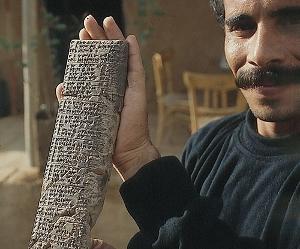Can virtual reconstructions help archaeologists to safeguard scientific information of archaeological objects lost in the armed conflict? And, what is the validity of the method of casting the archaeological objects in the field, followed by CT scan of the casts and virtual reconstruction in the lab? The Scanning for Syria project is making three-dimensional virtual reconstructions of archaeological objects lost in the Syrian civil war.

The relentless civil war in Syria is having disastrous effects on the people of Syria and their rich cultural heritage. Initiatives are taken across the world to preserve the archaeological materials or at least the scientific information they contain. The Centre for Global Heritage and Development has received KIEM funding to make high-resolution three-dimensional scans of plastic moulds cast in Syria before the war and subsequently physical replicas of the original objects by 3D printing. The short life expectancy (30 years) of the moulds necessitates measures for long-term preservation. The work will be done at the Faculty of Civil Engineering and Geosciences in Delft in collaboration with the Faculty of Archaeology (Leiden University).
The project focuses on casts of Assyrian clay tablets (ca. 1200 BC) from the site of Tell Sabi Abyad (northern Syria) excavated by Leiden University in the 1990’s but lost in the fog of war in 2012. Professional Assyriologists have confirmed the fidelity of a first replica that has been made in a pilot study. This project aims to optimize the method of preservation in terms of time and cost without compromising accuracy. It will safeguard precious archaeological information and make the objects accessible to both scholars and non-scholars.
An exhibition and a symposium will be organized by the National Museum of Antiquity (Leiden) and Leiden University, respectively. These events will highlight innovative methods for heritage preservation and engage the public to understand the legacy of the Assyrian civilisation, which laid the foundations of our current civilisation. The project will have significant impacts on the development of education via the multiple usage of replicas of archaeological artefacts for the Archaeology of the Future.
The project started in the summer of 2017.
Reuters made this movie about the project.
